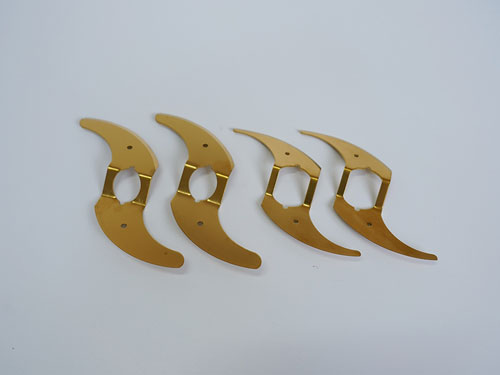
 Home > News
> News Information
Home > News
> News Information
As an indispensable tool in modern life, the production process of small household appliance blades is crucial for ensuring product quality and performance. This article will provide a detailed introduction to the production process of small household appliance blades, including key steps such as raw material selection, granulation and smelting, casting, processing, heat treatment, and packaging, to help readers have a comprehensive understandingSmall household appliance bladesThe production process.

Firstly, the selection of raw materials is the first step in the production of small household appliance blades. High quality raw materials are the foundation for ensuring the quality of blades. Manufacturers usually choose special materials such as alloy steel or tungsten steel with high hardness and wear resistance as raw materials. These materials have excellent physical properties and chemical stability, which can meet the needs of blades in different usage scenarios.
Next is the granulation and smelting process. At this stage, the selected raw materials need to go through steps such as crushing and grinding to produce granular materials suitable for smelting. Then, through the smelting process, impurities in the raw materials are removed, making the structure of the materials more uniform and pure. This step is crucial for improving the performance and lifespan of the blade.
Casting is a crucial step in blade production. During the casting process, by controlling parameters such as temperature and pressure, the raw material is solidified and formed in the mold, resulting in a preliminary blade shape. During the casting process, it is necessary to strictly control the temperature and time to avoid defects such as porosity and cracks, which can affect the quality of the blade.
After the casting is completed, the blade needs to be processed. The machining process includes multiple steps such as turning, drilling, grinding, etc. The purpose of these steps is to precisely control the shape and size of the blade to meet the design requirements. High precision machine tools and cutting tools are required during the machining process to ensure machining accuracy and surface quality.
Heat treatment is another important step in the production of small household appliance blades. By controlling parameters such as temperature, duration, and cooling rate of heat treatment, the hardness, strength, and toughness of the blade can be adjusted. Accurate control of various parameters is required during the heat treatment process to avoid problems such as excessive hardening or softening, which may affect the performance and service life of the blade.
After completing the heat treatment, the blade needs to undergo surface treatment. The main purpose of surface treatment is to improve the corrosion resistance and aesthetics of the blade. Common surface treatment methods include spraying, electroplating, etc. These methods can form a protective film on the surface of the blade to prevent corrosion and wear during use.
Finally, blades that have passed strict inspection need to be packaged. During the packaging process, attention should be paid to protecting the surface of the blade from damage, while ensuring that the packaging is firm and aesthetically pleasing. After packaging is completed, the blades can be put into storage, shipped, and other subsequent operations.
In summary, the production process of small household appliance blades involves multiple key steps, and each link requires strict control of quality and technical parameters. Manufacturers need to have advanced production equipment and professional technical personnel to ensure the production of high-quality and high-performance small household appliance blades. Meanwhile, for manufacturers, continuously optimizing production processes and improving production efficiency are also key to reducing production costs and enhancing competitiveness.
With the continuous advancement of technology and the increasing demand for product quality from consumers, the production process of small household appliance blades is also constantly innovating and developing. In the future, we can look forward to the emergence of more advanced and efficient production processes, as well as high-quality and diversified small household appliance blade products, bringing more convenience and beautiful experiences to people's lives.


.jpg)






